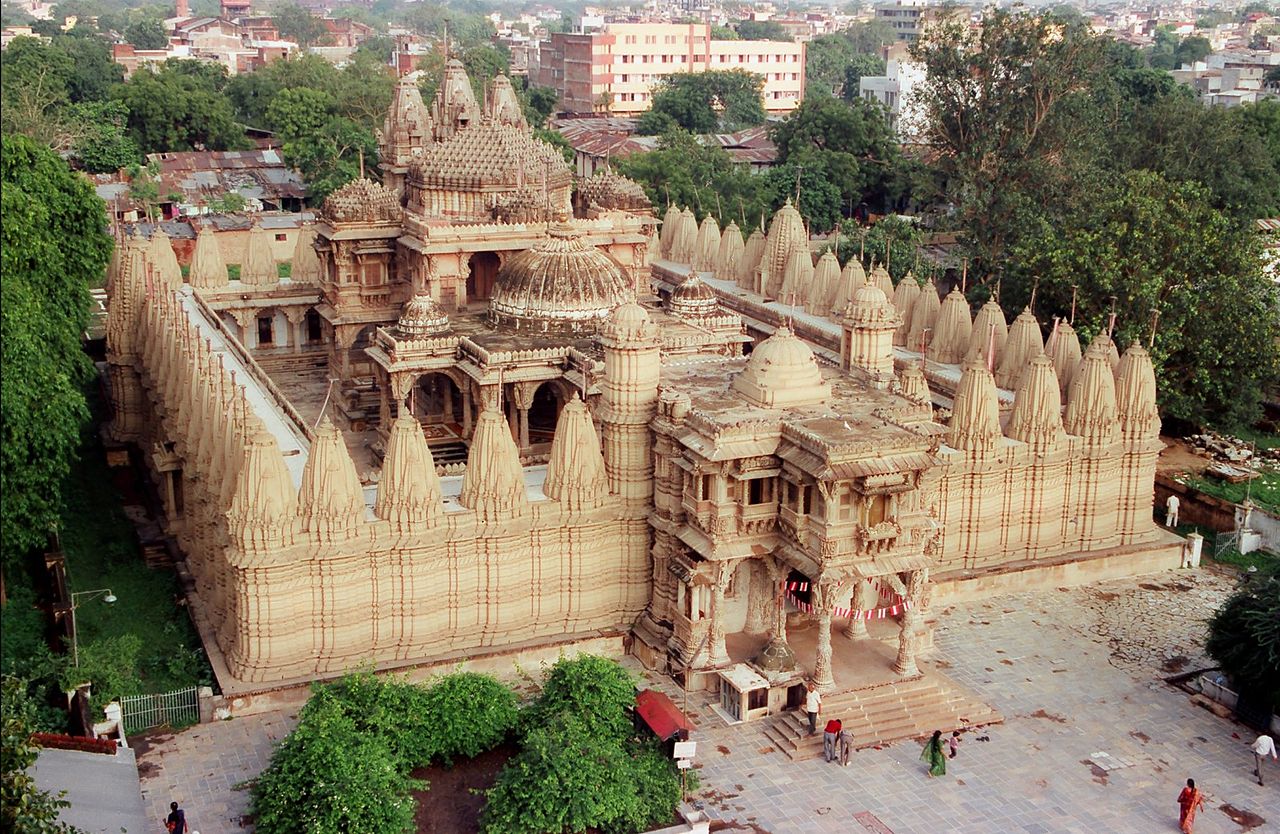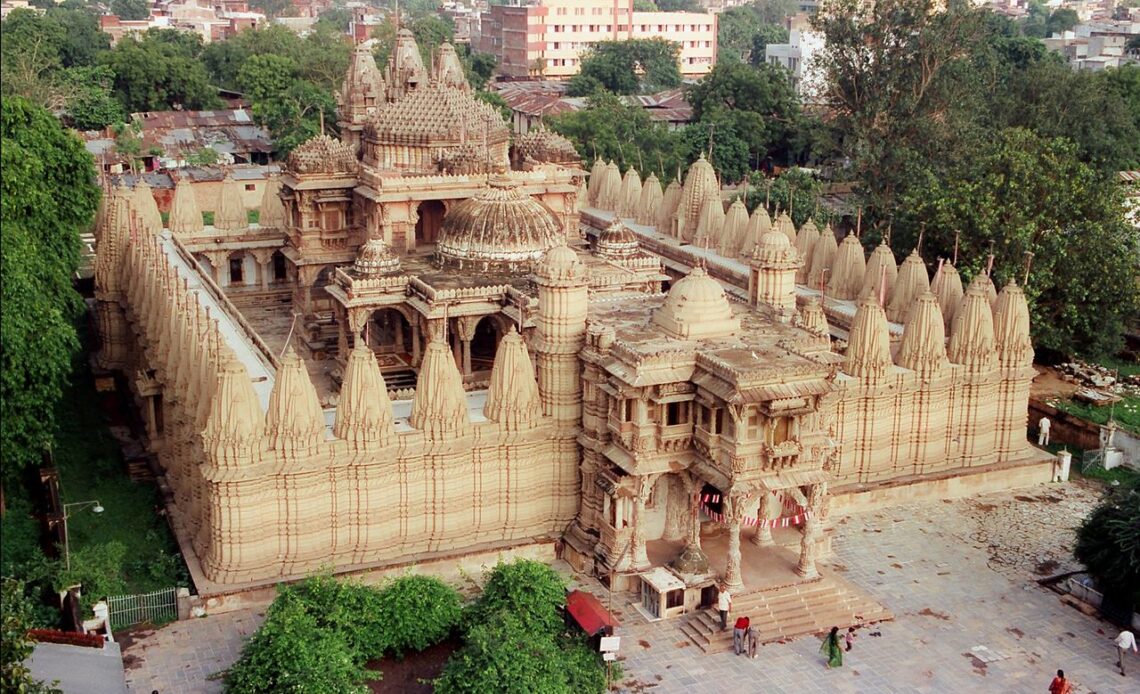Hutheesing Jain Temple – I told my cab driver on a fine Sunday morning. He asked me where it is and I wondered about his basic knowledge of the city. I checked the address on Google and said Madhupura. He laughed and said – Oh Hatheesing ni Wadi, say it like that na. A classical example of the local vs visitor to the city.
Anyway, we reached and parked the car in a neat and clean parking next to a Jain Museum. On one side was a dharamshala where Jains can use to stay when visiting the city. You obviously get the Satvik Jain food when you stay here at a reasonable rate.
On the right I could see a tall Stambha or pillar standing alone with an uncanny resemblance to the Vijay and Kirti Stambha at Chittorgarh Fort.
As I turned around the temple stood their majestically.
History of Hutheesing Jain Temple
As the name itself tells, the temple belongs to the Jain family of Hutheesing Kesarising, who was a businessman who lived in mid-19th CE. Though he started building this temple, he died young at the age of 49. The construction of the temple was then completed by his young wife Harkunwar Sethani.

A legend tells that the workers who were sculpting the stone were doing a not so fine work. When the Sethani Harkunwar found out, she spoke to the workers. They tell her that they were paid by the size of stone sculpted and fine work takes time. She told them to do the fine sculpting and bring to her the stone chipped off and they would be paid in equivalent gold.
Is this not a perfect case study of incentivizing excellence?
Another legend says that the temple was built at the time of a severe famine and draught. It provided employment to many craftsmen for a period of two years.
It is said that in those days the temple costed about Rs 12 Lakhs. The Consecration of the temple at the hands of Sh Shantisagar Suri ji was attended by more than one lakh people who came from villages near and far. Arrangements for their stay were made behind the temple that is still known as Hatheepara.
Architecture of Huteesing Jain Temple
The temple follows a curious mix of Maru-Gurjara style of architecture that is prevalent in this part of the country but with a dash of Haveli style. Premchand Salat was the architect of this temple.
At first look, it reminded me of the Ranakpur Jain Temple near Udaipur.
You enter the temple through a porch that is jetting out like you see in colonial bungalows. However, the…
Click Here to Read the Full Original Article at Inditales…
